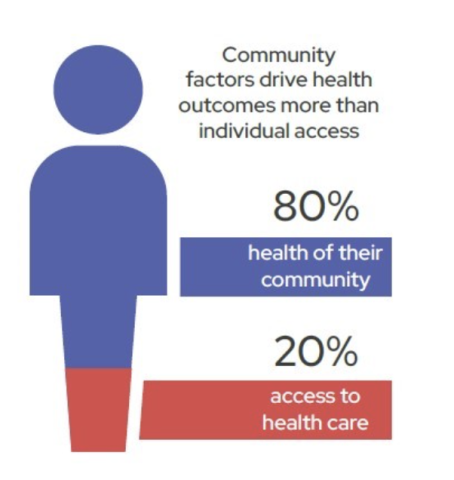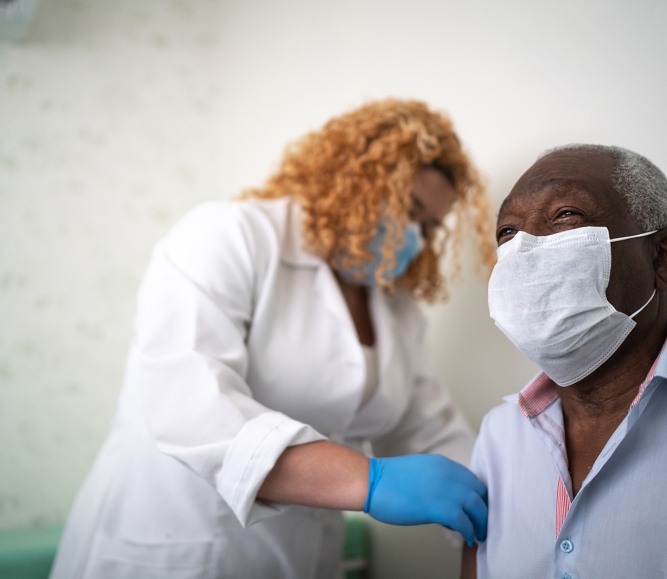Building a Legacy of Health: Transforming the Health and Wellbeing of Our Communities

Upcoming Events
Related News
Resources on Building a Legacy of Health
Counties are responsible for a vast array of services that form the foundation of our society. From designing neighborhoods and public spaces, maintaining the corridors that allow us to travel within and across communities, caring for our physical and mental health, ensuring public safety, and strengthening environmental stewardship, county leaders make decisions that impact our everyday lives. With about 80% of a person’s health driven by community-based factors, there is ample opportunity for county leaders to use their role and authority to support the health and well-being of local residents.

In partnership with the de Beaumont Foundation, NACo offers insights and actionable strategies to help county leaders build a legacy of health in our communities – beyond increasing access to clinical care. Explore these briefs and discover how targeted public health investments can transform your community and drive economic growth.
Strengthening Economies Through Healthy Communities
Investing in public health is not just about improving health outcomes; it's also a powerful economic strategy. By addressing chronic diseases, enhancing access to parks and healthy foods, and supporting active transportation, counties can reduce healthcare costs and boost worker productivity. These investments yield a high return, with a median ROI of 14 to 1. Implementing public health policies can also increase economic mobility and reduce healthcare expenses, fostering a healthier, more robust workforce.
Read this brief to learn how public health investments translate into economic benefits, helping to make informed decisions that support health and economic prosperity.
Public Health Investments with a High Return
Quality housing, education and environmental factors are critical to community health. Stable housing protects against substance use, while high-quality early childhood education boosts long-term health and economic outcomes. Improving air and water quality can significantly decrease the burden of chronic diseases. Investments in these areas promote a healthier, more productive workforce and generate substantial economic returns.
Read this brief to learn strategies and policy solutions for improving housing, education, and environmental quality to enhance community health and economic vitality.
Addressing Mental Health and Substance Use
The mental health crisis and substance use disorder epidemic are significant public health challenges. Policies that increase access to high-quality, affordable housing and early childhood education can prevent mental health issues and reduce substance use. Additionally, enhancing public transportation and green spaces can improve social connections and mental well-being.
Read this brief to learn valuable insights on how to prevent and address mental health and substance use disorders through community-based interventions and policy changes.
Addressing the Factors that Shape Health
Investing in the factors that shape health – sometimes referred to as the "social determinants of health" or "upstream measures" – is the most effective way to improve the health of an entire community. These factors include economic stability, education access and quality, healthcare access and quality, neighborhood and built environment and social and community context.
Read this brief to learn more about how to ensure future investments, policies or interventions have the greatest impacts on community health.
Latest Health Columns

Fall vaccines: Why they are important and how county leaders can support uptake
New versions of the flu and COVID-19 vaccines are now available and recommended for everyone 6 months and older.

Bird flu update: What county leaders should know
As of April 7, there have been 70 confirmed cases of bird flu in the United States, but no person-to-person spread has been detected.
Resource: Communicating More Effectively About Vaccines
Communicating clearly about vaccines helps people make important and informed decisions about their health.
Informed by focus groups conducted by the Public Health Communications Collaborative, in partnership with PerryUndem, this resource contains messaging approaches you can consider using to help you communicate more effectively about vaccines.

Featured Initiative
Healthy Counties Initiative
NACo’s Healthy Counties Initiative creates and sustains healthy counties by supporting collaboration and sharing evidence-informed approaches to pressing health issues.

Related News

USDA and HHS release new dietary guidelines
On January 7, U.S. Department of Agriculture Secretary Brooke Rollins and U.S. Department of Health and Human Services Secretary Robert F. Kennedy, Jr. unveiled the new Dietary Guidelines for Americans, 2025–2030.

SAMHSA cancels, reinstates thousands of behavioral health grants
Late on Wednesday, January 14, the Administration announced that thousands of Substance Abuse and Mental Health Services Administration (SAMHSA) grants that had been terminated just one day earlier would be reinstated.

House passes three-year extension of ACA Enhanced Premium Tax Credits
On January 8, the U.S. House of Representatives passed legislation to extend enhanced Affordable Care Act (ACA) premium tax credits (EPTCs) for three years, sending the measure to the Senate as lawmakers work to negotiate a bipartisan compromise.